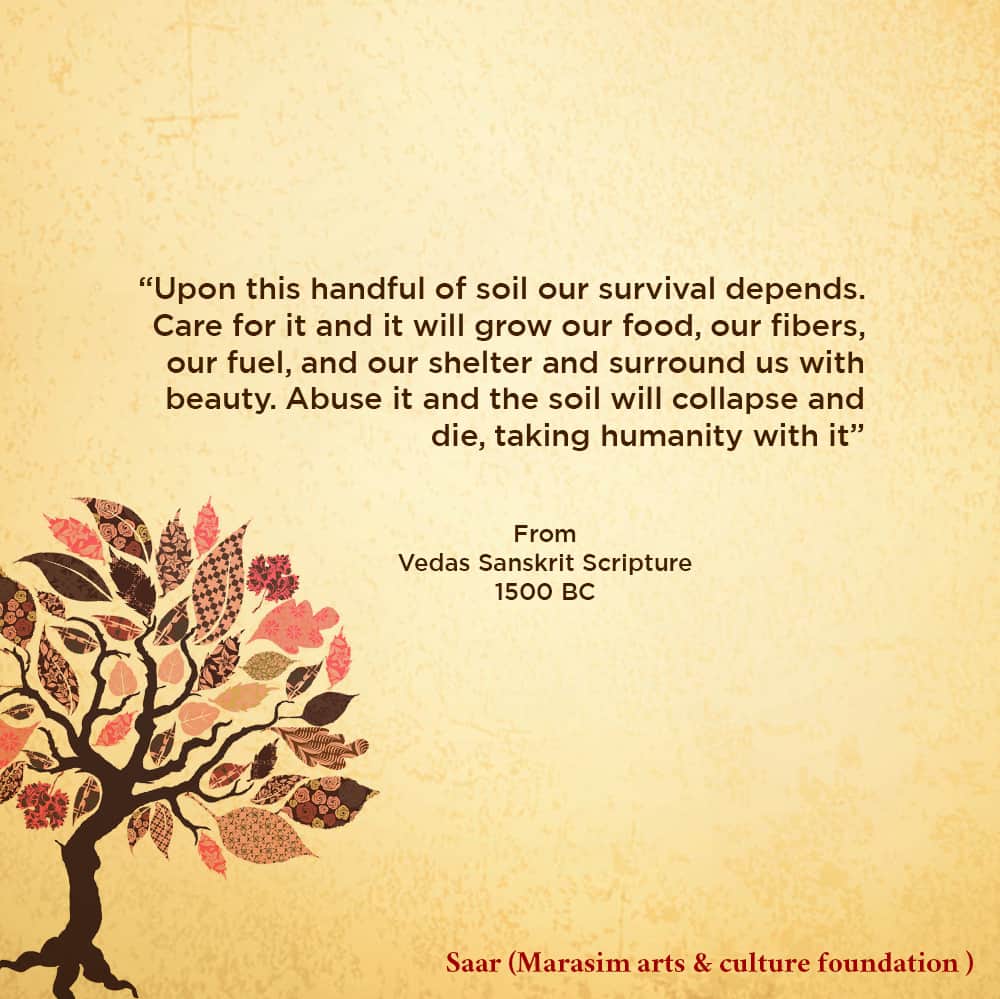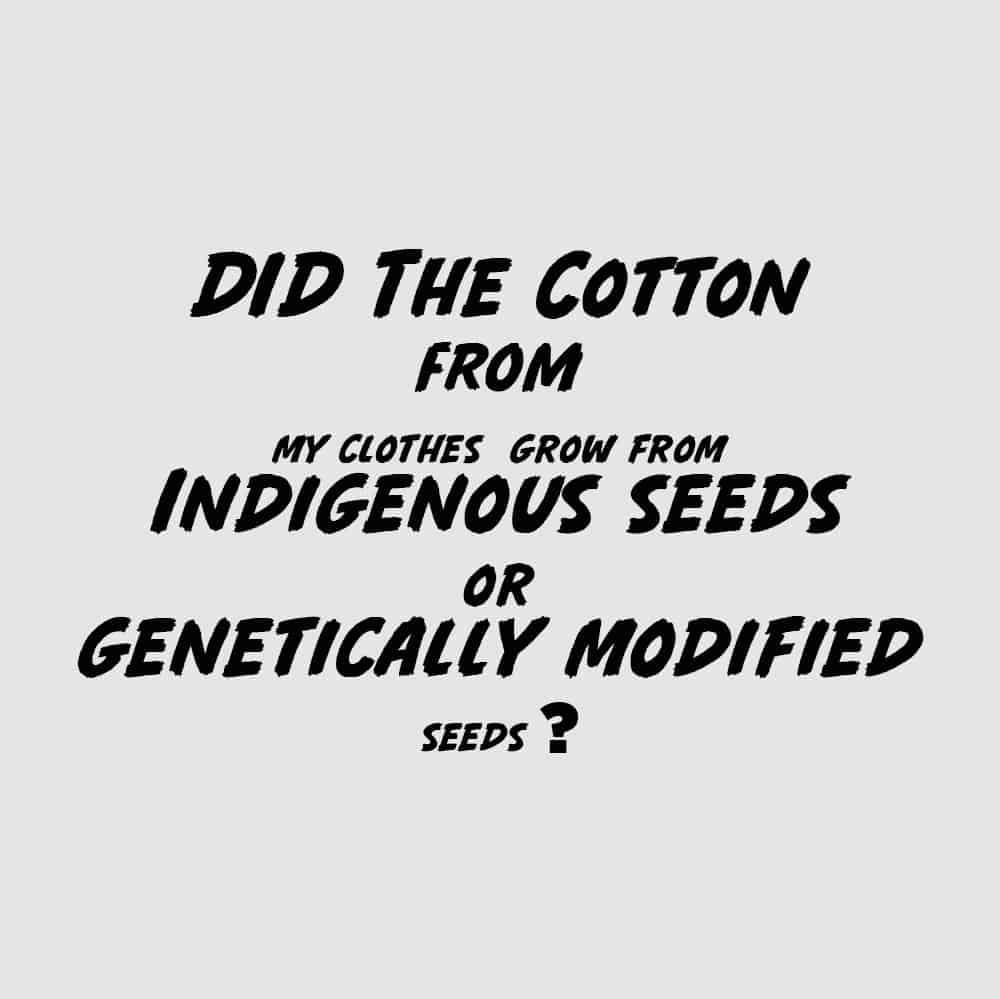10 May How do you Source Sustainable Cotton


Sustainable Cotton. In 2012, when I was doing my research on traditional wisdom of food in India. I learnt about the scholar and environmental activist Vandana Shiva. I appreciate the knowledge she shared on biodiversity conservation, organic farming, the rights of farmers, and the process of seed saving. It is a good sign that the food environmentalists have started to understand the harm the food ‘industry’ has done to the soil by replacing the traditional wisdom of nurturing and growing food on farms with the modern invention of lab made, chemically manipulated foods and agricultural practices.
The fashion industry should also adopt the concept of returning to “Earth Citizenship” and becoming a part of the Earth’s life cycles. The issue is that the fashion industry, with its long supply chains and numerous processes between idea generation and product development, lacks the time to develop an understanding of something as ancient and essential as cotton farming methods. The fashion industry generally places price above practices when it comes to most steps in the product development process.
COTTON- A CASH CROP
We often hear terms like organic, GMO, chemically or naturally dyed etc. with respect to cotton, but what do these terms mean and what is the preferred method? All of them come with their proponents and sales pitches. It is time, for the environment’s sake, our industry became aware of the agricultural practices to create our humble cotton. Cotton is a ‘cash’ crop. It is an agricultural crop that is grown to sell for profit.
In this article, we will discuss some simple parameters that can help you understand the origin of cotton and give you some questions to ask when sourcing sustainable cotton.
To gather this data, we spoke with cotton farmers, cotton seed suppliers, grassroots artisans, and supply chain managers.
There are 4 basic requirements for sustainable cotton farming –
Non toxic seeds, heavy rainfall, nutrient rich soil and a caretaker (a farmer )
1) Seeds & Sustainable Cotton
The seed is the basis of agriculture. It is the means to the yield and the basis for the farmer’s livelihood. Indigenous seeds are the embodiment of billions of years of nature’s evolution. Science cannot replace the wisdom of generations of native farming practices and time tested Indigenous seeds selected for their local soil.
Genetically Modified Seeds
However, the Monsantos and Bayers of the world replaced the Indigenous seeds and monopolized the production and distribution of Genetically Modified (GM) cotton seeds. They sell these seeds with the promise that they will have a better yield, longer fiber and contain a chemical gene that resists the pests that commonly attack and destroy cotton crops. These companies are the same ‘chemical disrupters’ who made poisonous gases for fulfilling Hitler’s ambition of killing humanity in gas chambers. The rhetoric has changed, but the toxicity of the chemicals they produce remains the same.
Imagine the state of soil which has seeds infused with toxic pest killing chemicals in their genes.
Seed Monopoly
The other eye opening truth is that the monopoly has numerous distribution channels around the world. Therefore the seeds are available in every farming community in the world.
These companies have not only monopolized the seed market, but also have introduced the concept of monoculture farming. Which is an agricultural practice of producing or growing a single crop, in a field or farming system at a time. This type of farming initially provides a high yield but leads to a quicker build up of pests and diseases in the long run.
The promise of pest protection from these genetically modified (Bt Cotton) seeds is also misleading. Over time, as the nature of evolution suggests, the pest develop a resistance to the pest control chemicals released from the cotton crop. This only leads to the creation and sales of stronger chemical pesticides to deal with the newly evolved pests. The destructive cycle continues. The soil, which was once life giving and nutrient rich, becomes chemically ridden, chronic disease causing lands.
Additionally, these pesticides are broad spectrum. They kill all bugs (good and bad) thus hampering the biodiversity of the soil.
Takeaway
When sourcing cotton, ask about the seeds used. Be aware that GM cottons come with elaborate sales pitches. Please don’t fall for them. Chose indigenous, non GM cottons.
2) Water and Sustainable Cotton
Cotton is a thirsty crop, demanding large quantities of water. Although the best source of water is heavy rainfalls, they are not always reliable. Even though the farmers put in a wealth of knowledge and buckets full of sweat to plant their seeds, one dry season can put all of their hard work to waste leading up to a hunger crisis. Therefore, farmers support dry seasons with irrigation systems to facilitate the growth of the crop. When cotton is cultivated intensively with irrigated water then it requires a very large quantity of water.. This causes soil salinization.
Takeaway
Check with your source on the availability or supply of water on the cotton farms. We suggest using Indigenous cottons coming from farms that has planned water systems.
3) Nutrient Rich Soil & Sustainable Cotton
Nature has always provided nutrients to the soil. Humans added pesticides to it. Then, turned cultivation and farming into industrial agriculture. Our race to industrialize and reliance on chemical solutions, whether it was creating genetically modified cotton seeds, carcinogenic pesticides or irrigation practices and then monopolizing them, has led us to a climatic catastrophe.
Nutrients in the soil have the ability to nourish seeds into a plant that uses chlorophyll and the process of photosynthesis to sequester carbon from the air and release life giving oxygen. The soil has micronutrients that can make or break the healthy evolution of the human species.
I wonder if the micronutrients in the soil were maintained then we might already have the immunity to deal with a pandemic like Covid-19.
Takeways
Organic and regenerative farming practices require minimal amounts of chemicals and maintain the biodiversity of the soil through polyculture.
4) The farmer & Sustainable Cotton
The English word “agriculture” comes from a combination of the Latin words agrum (meaning “land”) and cultura (“care”, “growing”, “cultivation”), which became ‘agricultura’ (care for the land).The farmer is the life of agriculture. Agriculture practice that replaces the farmer with drones or robots and artificial intelligence extracts more from than it gives to the land. Using chemicals and digital agriculture without understanding the concept of giving or caring for the land can create irreplaceable damage to our land.
Takeaway
Use cotton that comes from chemical free farms farmed lovingly by farmers.
Cotton Fibers to Sustainable Cotton Fabrics
Cotton fibers go through the process of ginning, cleaning, carding, spinning and weaving to become the finished cotton fabric. We can support handmade (khadi) processes or mechanized processes as long as the people in the supply chain are ethically treated and paid.
Next time, when sourcing ‘sustainable’ cotton. Please ask for the following –
Who sowed my cotton seeds? A drone or a farmer?
Are the seeds natural or genetically modified?
What is the nutrient value of the soil?
After all there is only one Earth we have. Our home, our common Mother.
In the next article I will share about regenerative farming.
Thank you
Nidhi Garg Allen
ABOUT THE AUTHOR
 Nidhi Garg Allen is an alumnus of Parsons School of Design and Adjunct Professor at the Fashion Institute of Technology. She is a technologist turned artisan entrepreneur and the founder and CEO of Marasim. Marasim based in NYC is committed to preserving artisanal textiles that make use of regional techniques without uprooting craftspeople from their native communities
Nidhi Garg Allen is an alumnus of Parsons School of Design and Adjunct Professor at the Fashion Institute of Technology. She is a technologist turned artisan entrepreneur and the founder and CEO of Marasim. Marasim based in NYC is committed to preserving artisanal textiles that make use of regional techniques without uprooting craftspeople from their native communities


Rebecca Cea
Posted at 10:28h, 14 MayThis is so wonderful and informative Nidhi! Thank you for offering your knowledge. Xx
Saar
Posted at 16:07h, 14 MayThanks Rebecca! Hope you’re well.